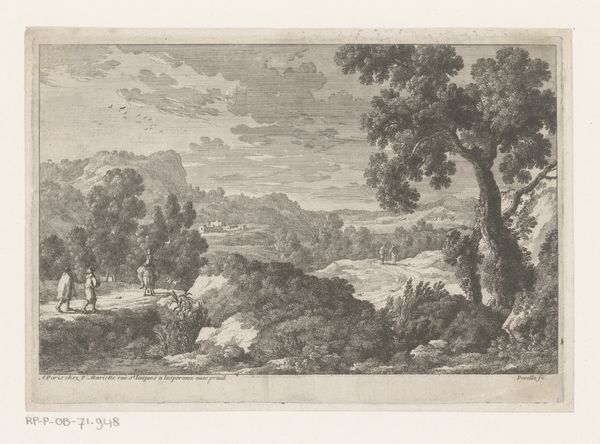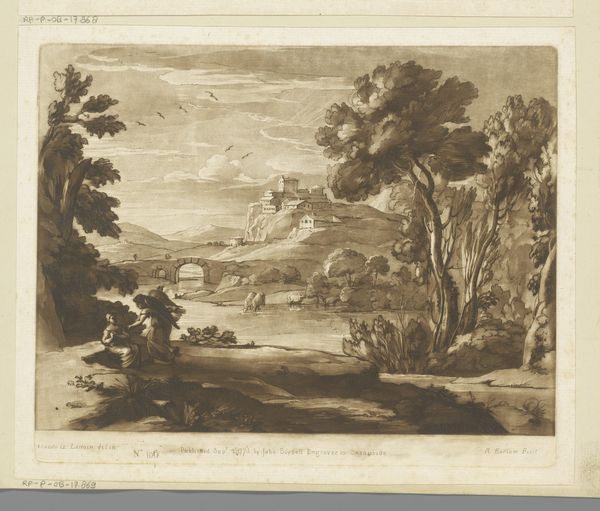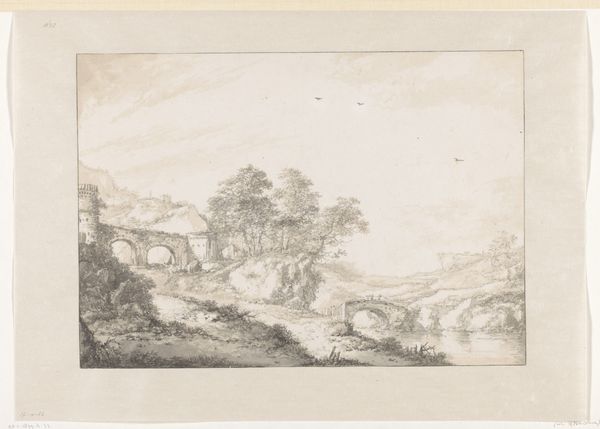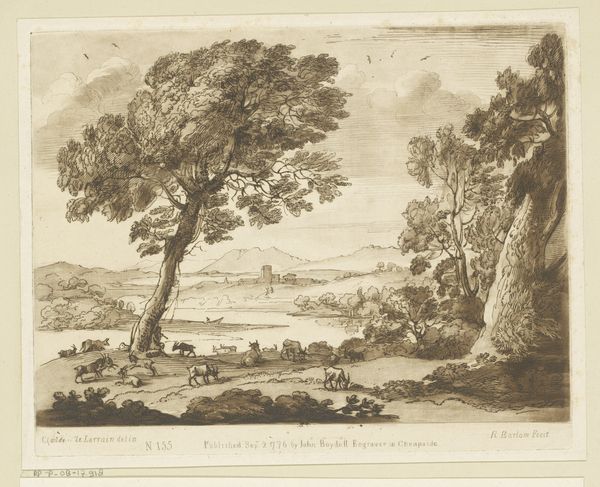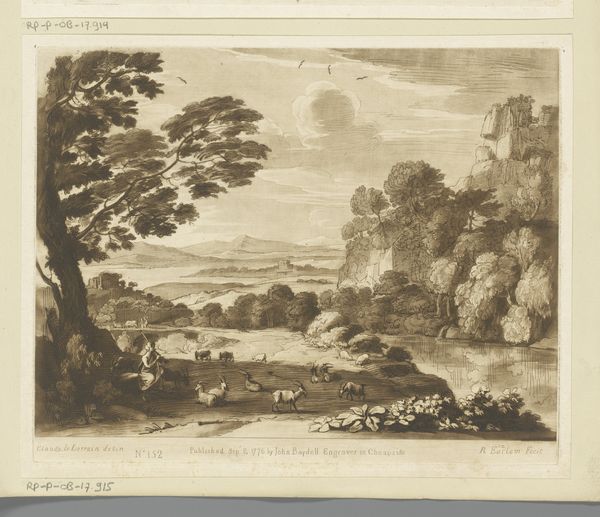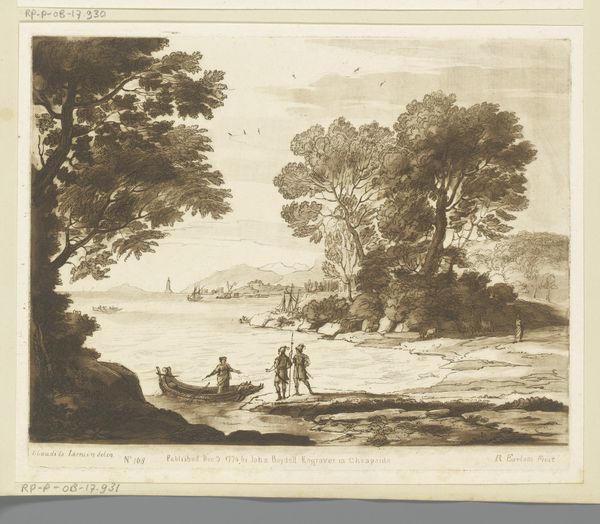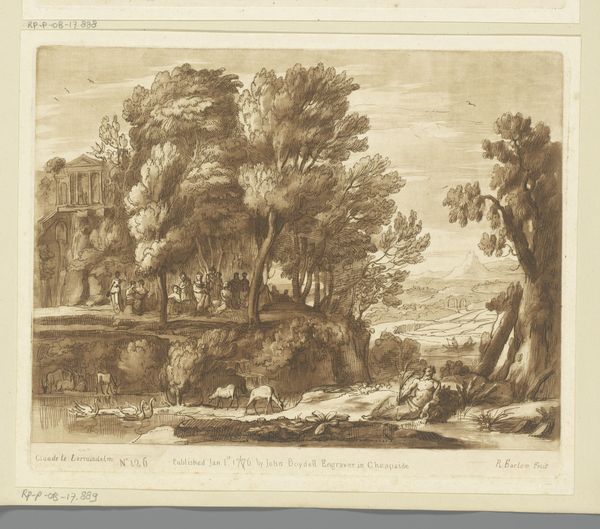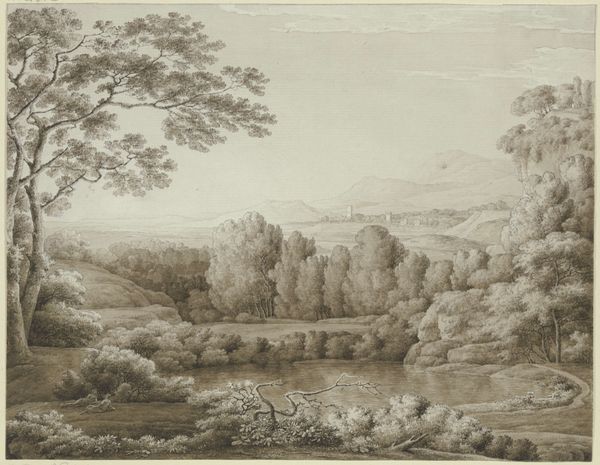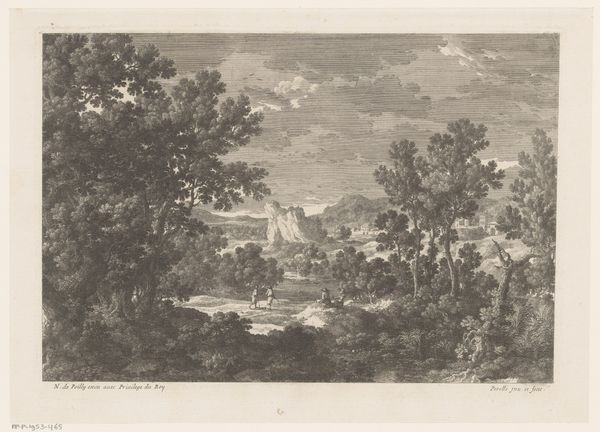
print, etching
#
neoclacissism
# print
#
etching
#
landscape
#
genre-painting
Dimensions: height 206 mm, width 256 mm
Copyright: Rijks Museum: Open Domain
Editor: This is "Landschap met badende figuren en kasteel op hoge klif," a landscape with bathing figures and a castle on a high cliff, made around 1775. It’s an etching, so a print. I find it interesting that there's an almost staged pastoral scene happening in the foreground and then, in the distance, we have this other landscape, suggesting different times and spaces. What social dynamics were at play that inform this art? Curator: I am fascinated by your observation. This artwork, emerging during the rise of Neoclassicism, invites a critical exploration of how power structures and social inequalities are often masked by idealized representations. Look closely at the castle overlooking the scene. What does it represent to you? Editor: A sort of dominion or power looking over the everyday life depicted below? Is that too simple? Curator: Not at all. Consider that these pastoral scenes were often commissioned and consumed by the very elite who resided in those castles. The figures bathing could be read as an intentional counterpoint, their unburdened freedom contrasting with the formal constraint of social expectation, reflecting the tensions between an elite class and the common subject, though perhaps unintentionally. Do you see hints of romanticization? Editor: Maybe in how idyllic it seems – how distant the ruling elite appears to be from the rest of the society? It seems almost divorced from any real struggles or hardships. I am not sure I would have made those connections on my own. Curator: It’s precisely by understanding the social and political landscape that the artwork unveils these intricate layers of meaning. It's like a mirror reflecting the values and inequalities of its time. We could question whether it functions to subtly validate, or critique that social hierarchy, for example. Editor: That's powerful! I’ll never look at a landscape the same way. Curator: And that's precisely the point. By integrating social, philosophical, and feminist lenses, we gain the ability to decode the language of art and to contextualize its role in the ongoing negotiations of power and identity.
Comments
No comments
Be the first to comment and join the conversation on the ultimate creative platform.

